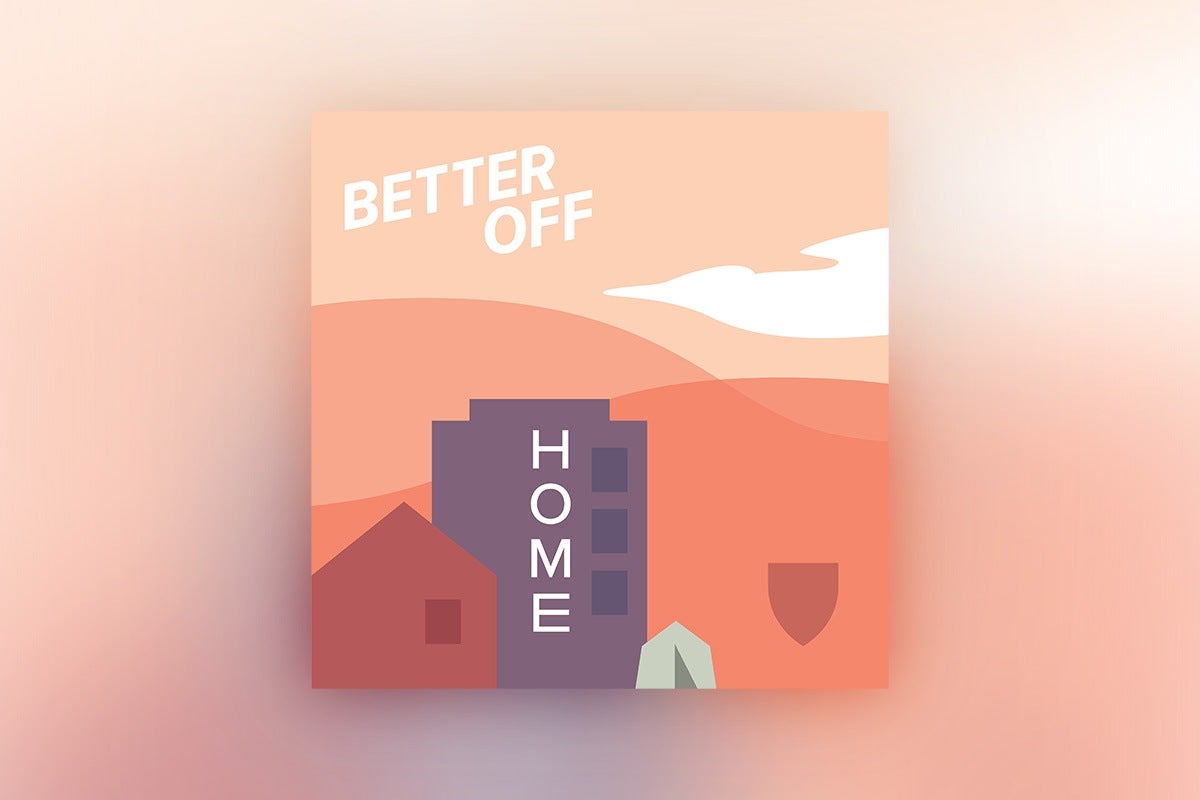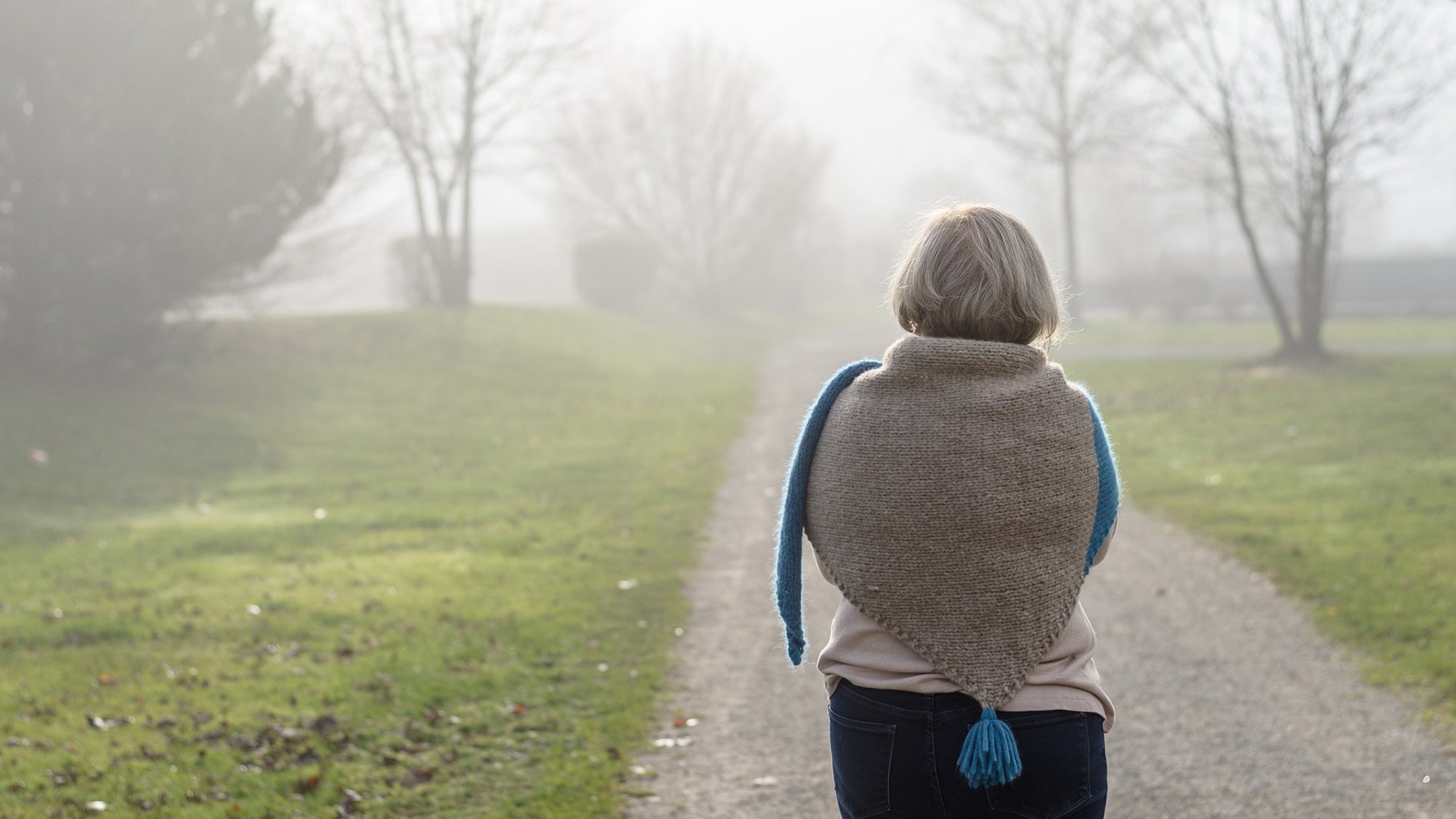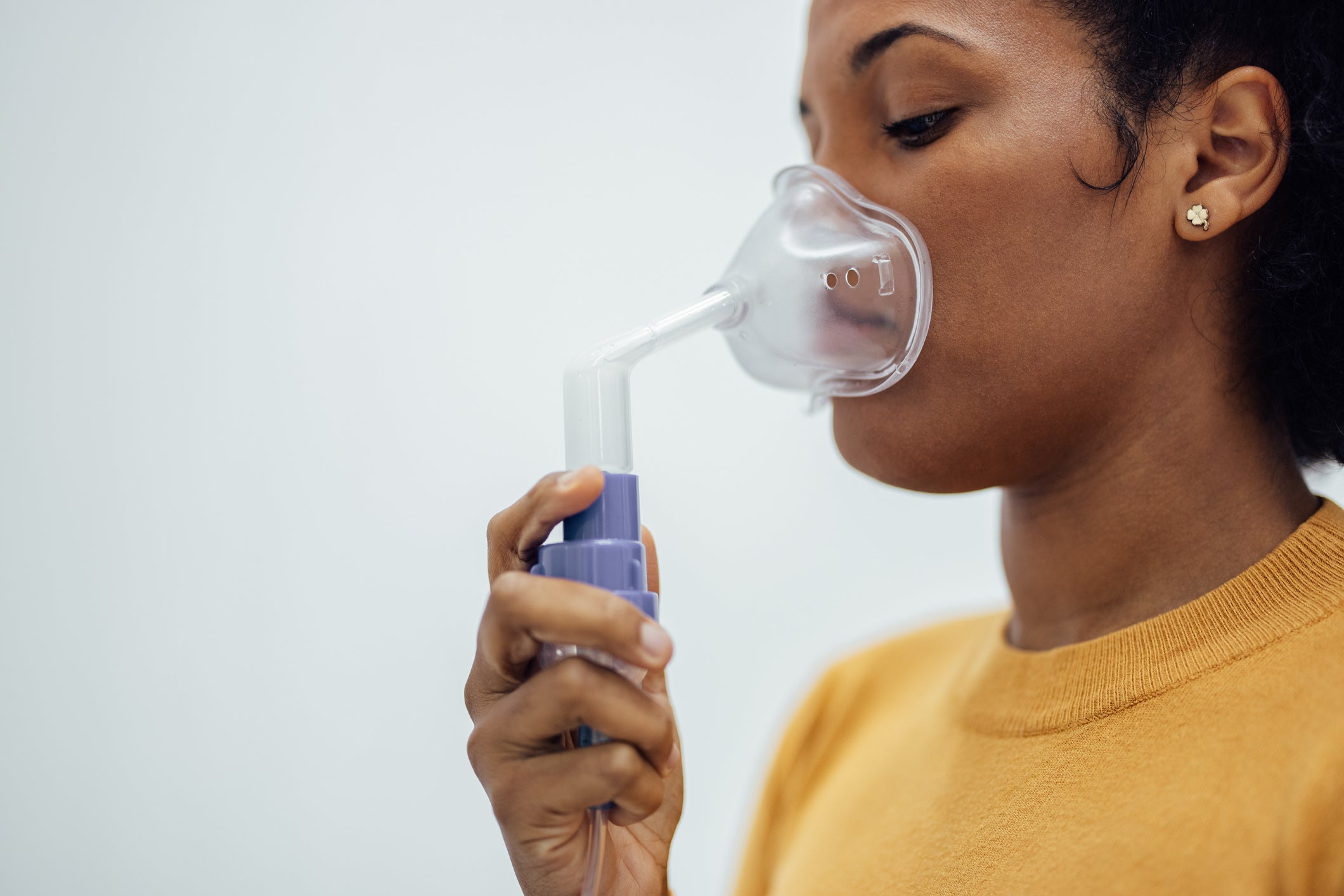Better Off Podcast: Is working from home unhealthy?

Working from home has its perks: Better coffee, easy commute, no fluorescent lighting. But, as any home office worker can tell you, there are also downsides: No more office social hours, no more ergonomic chairs, and no more quiet train rides to catch up on your podcasts. In this episode of the Better Off podcast, we’ll ask: Is working from home good or bad for our health?
SUBSCRIBE VIA APPLE PODCASTSSUBSCRIBE VIA GOOGLE PODCASTSSUBSCRIBE VIA SPOTIFY
Guests
Eileen McNeely, Founder and Executive Director of SHINE, the Health & Sustainability Initiative at the Harvard T.H. Chan School of Public Health.
- Read a study by Eileen McNeely and SHINE researchers exploring associations between the importance of well-being domains and the subsequent experience of well-being.
- Read an article by Eileen McNeely discussing business as a platform for human flourishing.
- Learn more about a recent SHINE paper in PLOS ONE exploring how working from home (WFH) impacts work engagement, performance, and job satisfaction.
Bethany Barone Gibbs, Associate Professor of Epidemiology and Biostatistics at West Virginia University
- Read a study by Bethany Barone Gibbs and other researchers who explored COVID-19’s impact on sedentary behaviors.
Credits
Host/producer: Anna Fisher-Pinkert
The Better Off team: Kristen Dweck, Elizabeth Gunner, Pamela Reynoso, Stephanie Simon, and Ben Wallace
Audio engineering and sound design: Kevin O’Connell
Additional research: Kate Becker
Full Transcript
Anna Fisher-Pinkert: From the Harvard T.H. Chan school of public health, this is Better Off. A podcast about the biggest public health problems we face today.
Bethany Barone Gibbs: I am worried about the large segment of the population that has lost a lot of chances to move during the day which we know is really important for long-term health.
Anna Fisher-Pinkert: And the people innovating to create public health solutions.
Eileen McNeely: Those people who are working five days a week from home, they’re more focused and engaged and productive when they were working.
Anna Fisher-Pinkert: I’m your host, Anna Fisher-Pinkert. This is our last episode of Better Off this season and our last episode on the topic of home. And I’m just going to take a minute to give you a little insight into how this podcast gets made. Right now, I’m sitting on the floor in my bedroom closet with my laptop and mic propped up on an ottoman that I stole from my daughter’s room.
Anna Fisher-Pinkert: And I’m in here because I work from home three to five days per week. And this is the quietest spot in my house. All of my unused work clothing makes for great soundproofing. And I’ll be honest, I don’t know that I’m ever going to record this podcast back in a normal studio.
Anna Fisher-Pinkert: The US Census reports that between 2019 and 2021, the number of people primarily working from home tripled. From just 9 million to more than 27 million. Now, that’s leveled off a bit, some companies like Twitter, Goldman Sachs, and Disney are trying to get workers back into the office, but the allure of answering emails in your jammies has not gone away.
Anna Fisher-Pinkert: A lot of workers like staying home. I like staying home too. But since I started working from home, I’ve noticed that my energy levels have gone down. I get more backaches. I find myself snacking on the chips in my pantry instead of eating a real lunch. So, I wanted to figure out, is working from home bad for our health.
Eileen McNeely: It’s not an easy answer, yes or no.
Anna Fisher-Pinkert: That’s Eileen McNeely. She is a founder and executive director of the sustainability and health initiative for net positive enterprise or SHINE. A research program at Harvard Chan school that explores issues of work and health. And lately, she and her team have been doing a lot of thinking about the health impacts of working from home. Particularly on mental well-being.
Eileen McNeely: If you’re looking at many aspects of our health, there’s good things about working from home, and there’s not so good things. So, it’s a more nuanced discussion.
Anna Fisher-Pinkert: The first nuance we have to keep in mind is that a lot of workers switched to remote work as a direct result of the COVID-19 pandemic. For researchers, it can be very difficult to untangle which health outcomes are actually a result of working from home and which are a result of, say, our strained healthcare system, or really long periods of social isolation during lockdowns.
Anna Fisher-Pinkert: But Eileen’s group was in an interesting position. Prior to the pandemic, they had already started to follow a cohort of office workers who had elected to work from home. These were workers at a large insurance company. SHINE surveyed the workers about their experiences. They came in with some basic presumptions about what they would find.
Eileen McNeely: We kind of thought that working from home really interferes with work-life balance. And that particularly people who were caregivers had responsibility for children or elders that it would be particularly tough. It was surprising to find that it did not interfere with work-life balance. And maybe that’s because, and there’s been some written about it, that if you work from home, you might work more hours because you might stop and do some other activities, and the boundaries aren’t so crisp. But in essence, that gives you more autonomy.
Anna Fisher-Pinkert: So, here’s, what’s even more surprising. Working from home full-time had a positive impact on productivity.
Eileen McNeely: Those people who are working five days a week from home, they were less distracted. They were more focused and engaged, and productive when they were working. So maybe that autonomy and flexibility offers them something that’s really integral to performance.
Anna Fisher-Pinkert: There are other upsides to working from home. In a different study, SHINE followed office workers, who’d moved into a state-of-the-art office building in Bangkok in 2019, right before the pandemic, after they were all told to work from home.
Eileen McNeely: Their satisfaction with their indoor environmental quality went up. Mostly in two ways, in terms of the air, and in terms of their noise satisfaction, with the noise. Maybe that is cuz they could personally regulate those things. Open the window, increase the circulation, put on the AC or whatever for their personal preference. So that was a really interesting thing.
Anna Fisher-Pinkert: Again, autonomy makes people happy. Not all office spaces are great working environments. Personally, I’ve worked at a desk in a hallway, in a closet-like office with no windows, and in one office where the AC unit was infested with bees.
Anna Fisher-Pinkert: And while I don’t miss my stinging office mates from that one job, I have found myself missing my human coworkers these last few years. And Eileen says that’s not unusual.
Eileen McNeely: In that same study, we looked at psychosocial factors too, and how they might play into someone’s sense of flourishing and well-being. And their sense of belonging in social community that they got from work went down.
Anna Fisher-Pinkert: The term ‘flourishing’ is really important to understanding this research. It’s a big term that includes five different dimensions of wellness.
Eileen McNeely: Flourishing is complete well-being. It’s physical and mental health. It’s social belonging. It’s meaning and purpose. It’s character and virtue. So, we looked at how much do we get from work and how much do we get from our other networks, our families, our communities. And what was interesting is that our sense of community and social belongingness, and identity comes more from work. I mean, you do get it from other networks, but it comes largely from work. So, it’s not surprising to me that in this situation where people working remotely, that they lost something there.
Anna Fisher-Pinkert: I personally find this pretty resonant. Years ago, when I got engaged, some of the first people to congratulate me where my coworkers. My first week in this job at Harvard Chan school, my colleagues bought me a plant to welcome me, and I still have it on my dresser at home. I’ve also learned a lot from colleagues over the years, and I don’t know that that would have happened without in-person interactions.
Eileen McNeely: Being in an office with others, in person, does contribute to learning and collaboration. Does it need to be full-time? Probably not. But that social belongingness and community is built in person. And there’s also something we know about from the social learning theory, which is that we learn better, not singly, but together.
Anna Fisher-Pinkert: Working from home doesn’t necessarily mean working alone. But those collaborations are now taking place on screens instead of in physical space, which poses its own set of challenges for worker well-being.
Eileen McNeely: In person, you read non-verbal cues a lot, and in this two-dimensional world, it’s not so easy. So, neuroscientists have looked at stress hormones in people who have been on Zoom calls and actually looked at the time of exposure, the number of people in the group, and they’ve looked at how this impacts people’s stress levels and, guess what they found? That the more time they spend in these Zoom meetings with lots of people in the meetings, their stress hormones go up.
Anna Fisher-Pinkert: Mental stress is one problem with spending so much time on Zoom. But as my strained neck and aching back can tell you, it’s not the only problem. We’re all spending way too much time at our desks.
Bethany Barone Gibbs: We know a lot about why sitting in a prolonged way is not good for you.
Anna Fisher-Pinkert: That’s Bethany Barone Gibbs. She’s an associate professor of epidemiology and biostatistics at West Virginia University school of public health, and she studies physical activity and cardiovascular health. She’s done studies where she asked people to assimilate their workday, either seated the whole day or alternating, sitting, and standing.
Bethany Barone Gibbs: God bless these participants that came into the office.
Anna Fisher-Pinkert: And then she and her colleagues measured what happened in the body.
Bethany Barone Gibbs: When you’re sitting, you really disrupt that natural blood flow that happens in your legs. Your muscles don’t contract, and that helps your circulation.
Bethany Barone Gibbs: And so, blood pools in your legs, this is like a really well-documented, effect and kind of gross. At the same time, we find dramatic differences in things like low back pain and neck pain.
Bethany Barone Gibbs: So, people that, kind of move around and stand some during the day, have way less low back pain in the later hours of a simulated workday. And lastly, sleepiness. So, people in the afternoon start to feel sleepy, and that is not as common when you interrupt that prolonged sitting with standing across the day.
Anna Fisher-Pinkert: Other researchers have found that moving throughout the day keeps our blood sugar up for longer and improves blood flow to the brain.
Anna Fisher-Pinkert: And okay, I had heard some of this before, sitting is the new smoking. But some sitting during the day is fine. In fact, Bethany says that people often get a sit-stand desk and then stand all day long, which isn’t advisable either. On the other extreme end, people who sit for 10 or more hours a day, do have a higher risk for cardiovascular issues. It also gets harder for long-term sitters to mitigate those risks.
Bethany Barone Gibbs: If you do need to, for whatever reason, sit for that much, you need to do more exercise than the standard recommendations. You need to do pretty much twice the regular amount of exercise that typical Americans are recommended.
Anna Fisher-Pinkert: If you sit for ten or more hours a day, you have to exercise about an hour a day rather than the standard 30 minutes to reduce your risk of cardiovascular issues. So, sitting for longer periods is bad, but are we genuinely sitting more when we work from home? My totally unscientific study of my office says it’s a mixed bag. I have one colleague who uses his lunch break and former commuting time to run 10 or 12 miles. I, on the other hand, mostly walk between my desk and the kitchen.
Anna Fisher-Pinkert: Fortunately, Bethany has some actual data.
Bethany Barone Gibbs: If you compare people who are at home during working time, we find that during the workday, these folks get about 800 steps less per day and are sitting in a prolonged way. So, I mean, when they sit down, they sit down for a longer period of time at once. And that is actually the behavior that we’re linking to sort of more negative physiological effects. Like, you know, your blood pressure rising across the day and your vascular function in your legs declining.
Bethany Barone Gibbs: Kind of comparing apples to apples, these folks are not getting a good activity pattern during the workday.
Anna Fisher-Pinkert: This translates to people working from home, sitting an extra 30 to 60 minutes per day. In other words, my low activity habits are more typical. And that concerns Bethany.
Bethany Barone Gibbs: I’m not worried about your friend who’s running during his lunch break. He’s probably gonna find a way to exercise no matter what. I am worried about the large segment of the population that’s not physically active, that has lost a lot of chances to move during the day, which we know is really important for long-term health.
Anna Fisher-Pinkert: At the peak of the pandemic, I let my gym membership lapse. And while that probably had a big impact on how much I move at the same time, I was losing out on a lot of other kinds of movement that I took for granted.
Bethany Barone Gibbs: So, there have been many reasons that the COVID-19 pandemic has affected our activity levels, you know, remote work and the lost opportunities to move. Simple things like having to walk down a long hallway to get to the bathroom versus going around the corner or having to park and walk into your building.
Bethany Barone Gibbs: Maybe people who are taking public transportation, maybe they had to walk a half mile to the bus stop and then a half mile to their work and then do that again on the way home. That’s two miles of walking every day that you’re no longer doing when you’re doing remote work.
Bethany Barone Gibbs: And for people who are not active or don’t make activity a priority, that was maybe their only opportunity to move.
Anna Fisher-Pinkert: Fortunately, you don’t need to work out like a pro athlete to improve your cardiovascular health.
Bethany Barone Gibbs: So, the biggest bang for your buck regarding physical activity is going between zero minutes per week to 150 minutes per week.
Bethany Barone Gibbs: And that is a big change when we think about relative risk of things like mortality and cardiovascular disease.
Anna Fisher-Pinkert: Bethany’s recommendation is pretty simple. Find opportunities to move at home that replace the kinds of movement you had at work. Bethany tracks her own movement with a smartwatch.
Bethany Barone Gibbs: So, in the morning, if my watch tells me that I haven’t been moving around and I should be, I go upstairs and make my girls’ beds. I’m just moving around. I’m just, you know, activating my muscles, getting my circulation going, moving my body, like get loosening up my joints. And it doesn’t have to be something really intense, and that’s something I kind of had to do anyway.
Anna Fisher-Pinkert: She also recommends switching off your camera and taking a walk while you do an old-fashioned voice-only meeting.
Bethany Barone Gibbs: And then regarding standing, you know, I just think it’s so important to invest in some kind of sit-stand option in your home. This could be a sit-stand desk. You know, some of them are super expensive. There’s some that are only a couple hundred bucks. There’s some that sit right on top of your existing desk or table.
Anna-Fisher-Pinkert: If that isn’t in your budget, you can find creative ways to change positions during the workday.
Bethany Barone Gibbs: Now I’m talking to you on my kitchen counter. So, you know, you can find ways to just complete some of your work standing.
Anna Fisher-Pinkert: Some offices make it harder for workers to take breaks away from their desks by installing software that tracks computer mouse movements or keystrokes. This software is built as improving productivity, but Bethany thinks it’s important for workers to get genuine breaks to move.
Bethany Barone Gibbs: Some places actually shut down computers at lunchtime. But if you actually encourage people to take a lunch break and say, hey, look, we are expecting you to get active and get outside and move around or do something during this hour to kind of revive yourself. That kind of employer-level permission and encouragement can really help people move during the day.
Anna Fisher-Pinkert: This would require that employers trust their workers to do their jobs, whether they’re doing them in a cubicle or in between yoga stretches in their living rooms. Based on the evidence, Eileen thanks bosses who are worried about productivity should probably chill out.
Eileen McNeely: This is a trust issue. There was a study by Slack, that team working software, and actually working from home, people were 30% more productive. So, when they’re working, they’re working.
Anna Fisher-Pinkert: There is no way to make working from home exactly like working from the office. And maybe that’s not a bad thing. Offices were a one size fits all solution that didn’t leave people with a lot of individual choice. Now we’re left with almost too many choices. Hybrid schedules, anchor days, flexible hours to Zoom or not to Zoom. To Eileen, these choices come down to one question.
Eileen McNeely: How do we respect people’s preferences so that they can perform to the best of their abilities?
Anna Fisher-Pinkert: No one has this balance quite right yet. I asked Eileen about the phenomenon of quiet quitting, where workers kind of tune out from their jobs and do the bare minimum. She thinks it’s very much tied to worker well-being. SHINE is actually trying to measure whether workers feel supported or not.
Eileen McNeely: We created this measure called Caring Climate, that is the perception of how management treats employees. It’s a shared view of that sense of caring. And the bottom line, the pieces of caring are not just, “does your management care for you,” but how much respect, fairness, and equity in the workplace trust, do you trust them?
Eileen McNeely: So, it is, when you’re having a conflict, an issue, do you feel you can get help? Actually, ask for help. And these elements, these questions are part of this caring climate scale. We see this very much associated with business outcomes like job satisfaction, turnover, but also with well-being.
Anna Fisher-Pinkert: Worker health isn’t just about the built environment, but who you work with and how you’re treated. And that means that improving worker health can take place at home, in the office, or anywhere else.
Anna Fisher-Pinkert: As we’ve explored health at home over the last six episodes, I’ve thought a lot about what health looks like for me, in my home. What I see in all these stories is that our homes are healthier when we remember that we’re part of a community. Health can’t happen in a vacuum. We need our coworkers to remind us to take a stretch break. We need families to teach us recipes that connect us to our roots. We need whole cities and towns to make space for affordable housing.
Anna Fisher-Pinkert: These three years of relative isolation have made me more aware than ever that my health is dependent on the health of my community. Researching this podcast has prompted me to make some changes in my life like getting rid of makeup made with endocrine-disrupting chemicals, and shopping for an induction stove to replace the one in our house that uses natural gas. But along with these personal steps, I’m also going to spend more time thinking about how I can take action to ensure that everyone in my community can be better off.
Anna Fisher-Pinkert: That’s it for this season. Thanks for listening to Better Off. We’re better off with our team, Kristen Dweck, Elizabeth Gunner, Stephanie Simon, Pamela Reynoso, and Ben Wallace. Audio engineering and sound design by Kevin O’Connell. Additional research from Kate Becker. I’m host and producer Anna Fisher-Pinkert. Special thanks to our guests, Eileen McNeely, and Bethany Barone Gibbs.
Anna Fisher-Pinkert: To read more about their work and hear all the past episodes of Better Off, visit our website hsph.me/better-off. Also please rate and review us on your favorite podcast app and tell your friends about the podcast too. We will see you in a few months for Season 3.


